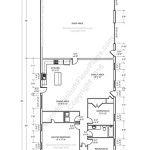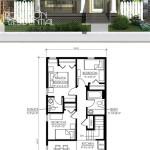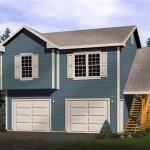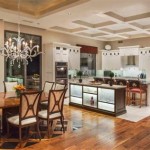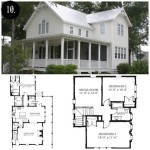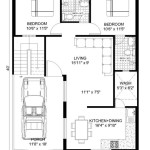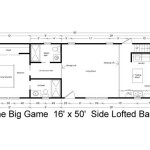Steel A-Frame House Plans: A Comprehensive Guide
Steel A-frame house plans represent a modern take on a classic architectural form, combining the structural integrity of steel with the distinctive aesthetic of the A-frame design. This construction method offers numerous advantages over traditional building materials, including enhanced durability, faster construction times, and increased resistance to pests and environmental factors. Understanding the nuances of steel A-frame house plans is crucial for anyone considering this innovative building approach. This article delves into the key aspects of these plans, exploring their benefits, design considerations, construction processes, and cost factors.
The Advantages of Steel A-Frame Construction
Choosing steel as the primary building material for an A-frame house offers a range of compelling benefits. Steel is inherently strong and durable, providing a robust structure capable of withstanding extreme weather conditions, including high winds, heavy snow loads, and seismic activity. Unlike wood, steel is non-combustible, significantly reducing the risk of fire damage. Its resistance to pests, such as termites, eliminates the need for costly preventative treatments and ensures the long-term structural integrity of the building. The standardized manufacturing process of steel components allows for precise fabrication and consistent quality, leading to reduced waste and improved construction efficiency. Furthermore, steel is a recyclable material, making it an environmentally responsible choice for sustainable building practices.
Another significant advantage of steel A-frame construction lies in its design flexibility. Steel's high strength-to-weight ratio allows for larger spans and fewer internal support structures, creating open and spacious interiors. This design freedom enables architects and homeowners to customize the layout and maximize the usable floor area within the A-frame structure. The ease of integrating large windows and skylights further enhances the connection with the surrounding environment, a common desire for A-frame homes. The inherent straightness and dimensional stability of steel contribute to a cleaner, more modern aesthetic, allowing for a variety of cladding options, including wood, metal, and composite materials. This versatility makes it possible to tailor the outward appearance of the A-frame house to suit individual preferences and blend seamlessly with the surrounding landscape.
The speed of construction is another notable benefit of steel A-frame homes. Steel components are typically prefabricated off-site, allowing for faster on-site assembly. This streamlined process reduces labor costs and minimizes construction time, leading to quicker occupancy. The precision of steel fabrication ensures accurate alignment and ease of connection, further accelerating the building process. The reduced construction time also minimizes disruption to the surrounding environment and allows for faster return on investment. This makes steel A-frame construction an attractive option for individuals seeking a durable, aesthetically pleasing, and quickly built home.
Key Considerations in Steel A-Frame House Plan Design
Designing a steel A-frame house requires careful consideration of several factors to ensure structural integrity, energy efficiency, and aesthetic appeal. The angle of the A-frame roof is a critical design element, influencing the overall stability of the structure and the usable floor space. A steeper roof angle provides greater structural strength and allows for more headroom on the upper levels, but it also increases the building's height and exposure to wind loads. A shallower roof angle reduces the overall height but may limit the usable space and require additional structural support. The selection of appropriate insulation materials is crucial for maintaining comfortable interior temperatures and reducing energy consumption. Spray foam insulation is often recommended for steel A-frame homes due to its ability to fill cavities and create a continuous thermal barrier, minimizing heat loss in winter and heat gain in summer.
Proper ventilation is essential for preventing moisture buildup and maintaining indoor air quality in steel A-frame homes. Condensation can form on the steel structure if adequate ventilation is not provided, leading to corrosion and potential health problems. Installing ventilation systems in the roof and walls helps to circulate air and remove moisture, preventing condensation and promoting a healthy indoor environment. The placement of windows and doors should also be carefully considered to maximize natural light and ventilation while minimizing heat loss and gain. Energy-efficient windows and doors with low-E coatings can help to reduce energy consumption and improve indoor comfort.
The foundation design is a crucial aspect of any building, including steel A-frame homes. The foundation must be strong enough to support the weight of the structure and withstand the forces of wind, snow, and seismic activity. Common foundation options for steel A-frame homes include concrete slabs, pier and beam foundations, and basement foundations. The choice of foundation type depends on the soil conditions, the slope of the land, and the desired features of the home. A structural engineer should be consulted to ensure that the foundation design is appropriate for the specific site conditions and the building design. This ensures the longevity and stability of the steel A-frame home.
The Construction Process and Cost Factors
The construction of a steel A-frame house typically involves several key stages, beginning with site preparation and foundation construction. Once the foundation is complete, the prefabricated steel components are delivered to the site and assembled according to the approved plans. The steel frame is typically erected using cranes and other heavy equipment, and all connections are carefully inspected to ensure structural integrity. Once the frame is complete, the exterior walls and roof are clad with the selected materials, followed by the installation of windows, doors, and insulation. Interior finishes, such as drywall, flooring, and fixtures, are then installed to complete the home.
The cost of building a steel A-frame house can vary depending on several factors, including the size and complexity of the design, the location of the building site, the selection of materials and finishes, and the availability of skilled labor. Steel framing can sometimes be more expensive than traditional wood framing, but the long-term benefits of steel, such as durability and resistance to pests and fire, can offset the initial cost. The prefabricated nature of steel components can also help to reduce labor costs and construction time, further mitigating the overall expense. Obtaining multiple quotes from qualified contractors and carefully reviewing the specifications and scope of work are essential for accurately estimating the cost of building a steel A-frame house.
Sustainable building practices can also influence the cost of a steel A-frame home. Incorporating energy-efficient features, such as solar panels, rainwater harvesting systems, and high-performance insulation, can increase the initial investment but lead to significant long-term savings on energy and water bills. Choosing environmentally friendly materials, such as recycled steel and sustainably harvested wood, can also contribute to a more sustainable and cost-effective building project. Working with a builder experienced in sustainable construction practices is crucial for maximizing the energy efficiency and environmental performance of the steel A-frame home while staying within budget. This proactive approach ensures a sustainable and cost-effective outcome in the long run.

Bolt Up Steel Frame Farmhouse Plan 16922wb Metalbuildinghomes Org

The Lth016 Steel Home Framing Package Lth Structures

Steel Frame Home Floor Plans Custom Houses

Catalog Modern House Plans By Gregory La Vardera Architect

Tiny House Plans 5x6 Build From Steel Frame Siding Panel 16x20 Feet

Perfect Metal Steel Frame Home W Diffe Layouts Hq Plans S

Metallic Structure Homes With Stunning Design Function

Dos Riatas Ranch House Plan Archival Designs

Steel Frames Frame House Structures

Bolt Up Steel Frame Farmhouse Plan 16922wb Metalbuildinghomes Org

